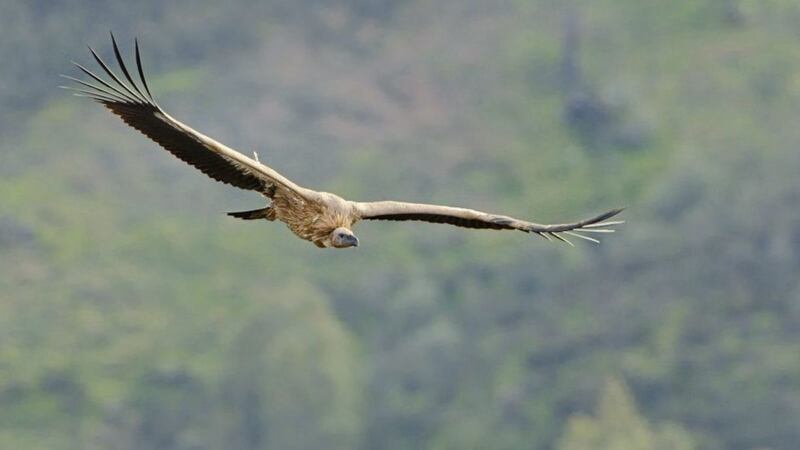WHEN the artist Wolf Vostell took visitors around his gallery in a remote region of Spain he would fling open a door and point to the greatest work of art on display.
In among the video loops, rusting car parts, painted canvases and sculptures made from recycled materials the doors opened out on to the countryside. On the other side lay Los Barruecos in Extremadura – a lake, low hills, stumpy oaks and olive trees, and wide-open skies with buzzards circling overhead.
Vostell, who was born in Germany but settled in this Spanish region after he married a local woman, was a visual poet of recycled material. He was a member of the Fluxus group of artists – which included Yoko Ono – and worked with man-made objects to illustrate how humanity had become a slave to consumerism and driven a wedge between itself and nature.
In the gallery, located in a former 18th century wool washhouse, large-scale installations incorporate dismembered cars, horses’ bones, scythes and other farming implements, moving parts and video installations – often featuring Vostell himself, who died in 1998 – and showing how the works on display were created.
One wall has dozens of identical motorbikes hanging like a curtain, with a soundtrack by Wagner playing in the background. These motorbikes were once used by the personal guard of the Spanish dictator General Franco and through them Vostell hammers home his message that no matter how powerful the individual, the curtain falls on everyone.
Outside the gallery, one of the most striking pieces is a tower which incorporates a fighter jet with its nose plunging towards the ground, as well as cars, TVs and other man-made objects.
Wildlife has started to reclaim the structure and storks have built their nests on it, with smaller birds flitting in and out of their nests in the crevices. Again the message is that humanity and its attempts to mould the planet are merely temporary intrusions that will eventually be reclaimed by nature.
Storks are everywhere in Extremadura, a remote region in south west Spain that borders Portugal. With a population of around one million people living in an area that is just under half the size of Ireland, it is a sprawling and often unspoiled landscape.
Los Barruecos were declared a national monument by the Spanish government in 1996. It is an area of granite rocks, small stumpy trees, scrubland and lakes.
Many of the lakes are actually man-made; dating from the 18th century, they were used by sheep farmers to wash wool.
As well as the storks, there is an abundance of birdlife. Extremadura is regarded by ornithologists as one of the most diverse regions in Europe and in particular is home to many birds of prey, including the golden eagle, Spanish imperial eagle, Bonelli's eagle, short-toed eagle and booted eagle.
It also provides a habitat for griffon vultures and black vultures, while there are sizeable populations of red kite, black kite, lesser kestrel and Montagu's harrier.
In the nearby city of Cáceres, about three hours' drive from Madrid and a good place to base yourself during a visit to Extremadura, you will see kites hovering overhead and nesting in among the rooftops.
Oak trees are common in the region; though much smaller than our Irish oaks, they are an ancient tree that have long been nurtured by humans.
In the 'dehesa', sparse oak forests, Iberian pigs wander freely and feed on fallen acorns – the jamon they produce is among the most sought after and expensive in Spain.
If you look closely you will notice strips of bark have been cut off from cork oaks to be used throughout Spain by its numerous winemakers.
Set among the trees grows lavender and rock rose and for the sharp-eyed forager, mushrooms and even stalks of wild asparagus. Truly a work of art.








